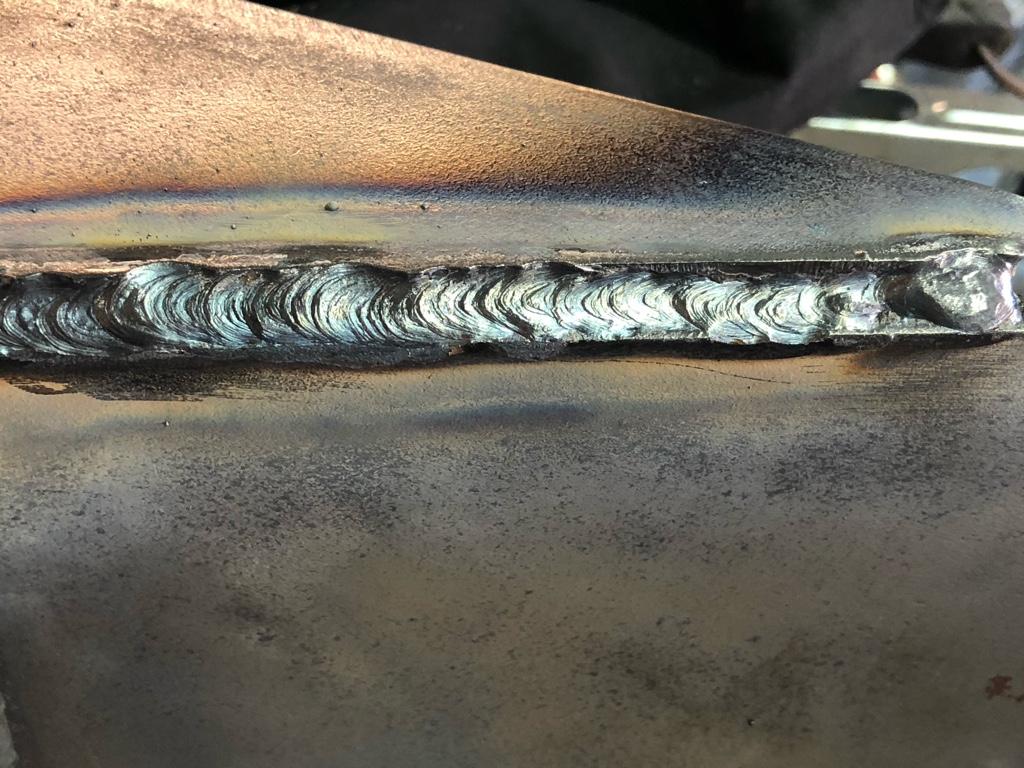Preventing Weld Undercut Demystified: Strategies for Success
Preventing Weld Undercut Demystified: Strategies for Success
Blog Article
Comprehending the Causes and Solutions for Undercut Welding in Metal Construction Processes
In the realm of metal fabrication processes, the occurrence of undercut welding poses a significant challenge that requires a thorough understanding of its reasons and sensible options. The complex interaction of different elements during welding procedures can bring about this unwanted sensation, affecting the structural honesty and total high quality of the welded joints - Preventing weld undercut. By dissecting the origin of undercut welding and discovering efficient remedial measures, makers can raise the requirement of their workmanship and ensure the production of perfect metal parts
Usual Sources Of Undercut Welding
Regularly forgotten in steel fabrication, undercut welding occurs due to various elements that demand careful interest and experience to be effectively mitigated. Additionally, improper welding methods, such as utilizing the wrong welding angle or travel speed, can also contribute to damage development. The selection of welding criteria, such as voltage, existing, and cord feed rate, plays a considerable function in the incident of undercut welding.
Impact of Incorrect Welding Parameters
Incorrect welding parameters can considerably compromise the integrity and top quality of bonded joints in steel construction processes. The impact of wrong welding criteria materializes in different ways, leading to architectural weak points and problems in the welded parts. One essential facet impacted by improper welding criteria is the infiltration depth of the weld. Insufficient warmth input because of low welding currents or exceedingly high travel speeds can cause insufficient fusion in between the base metals, leading to insufficient joint penetration and weakened bonds. Alternatively, extreme heat input triggered by high welding currents or slow traveling speeds can bring about burn-through and too much support, producing a brittle and unsteady weld framework. In addition, wrong specifications such as inappropriate voltage settings or inaccurate electrode angles can add to unpredictable weld bead accounts, lack of combination, and increased opportunities of problems like damaging. Careful focus to welding parameters is vital to ensure the production of high-grade welds with the desired mechanical residential properties and architectural integrity.
Impact of Improper Torch Angle
Inappropriate lantern angle in welding operations can significantly impact the top quality and stability of the final weld joints in metal manufacture procedures. Undercutting is a common welding issue where a groove develops along the weld toe, compromising the joint and compromising its architectural stability.
A torch angle that is too high can cause inadequate penetration, insufficient combination, and enhanced spatter. On the various other hand, a lantern angle that is as well superficial can cause extreme penetration, burn-through, and distortion of the base product. Preventing weld undercut. Appropriate lantern angle is crucial for making sure consistent weld top quality, stamina, and image source appearance
To protect against damaging and other flaws triggered by improper lantern angles, welders must be educated to maintain the proper torch angle throughout the welding procedure. Routine surveillance and modification of torch angles throughout welding can help accomplish sound welds with very little defects.
Function of Inadequate Welding Techniques

Another aspect of poor welding strategies is inappropriate weld prep work. Insufficient cleaning of the base metals, incorrect joint layout, or not enough side preparation can all contribute to undercut welding. In addition, poor protecting gas useful source protection or using the wrong sort of gas can lead to incomplete fusion and the development of undercut flaws.
To attend to the role of poor welding methods in metal manufacture procedures, it is necessary to provide thorough training for welders. Appropriate education on welding criteria, joint preparation, and securing gas choice can help protect against undercut welding and guarantee top quality welds in steel fabrication tasks.
Efficient Solutions for Undercut Welding
Addressing undercut welding in steel fabrication needs implementing efficient solutions to improve weld quality and architectural integrity. One of the key services to battle undercut is to change welding criteria such as voltage, current, and take a trip speed to make sure correct warm input and blend. By fine-tuning these settings, welders can stop too much melting of the base metal and filler material, lowering the possibility of undercut development.
In addition, proper joint prep work is crucial in avoiding undercut. Making certain clean base metal surface areas without contaminants and utilizing the ideal bevel angle can help promote much better weld infiltration and lower the risk of undercut - Preventing weld undercut. Employing appropriate welding methods, such as oscillating the torch or weaving, can also help in dispersing warmth equally and loading the weld joint properly, lessening the opportunity of undercut issues
Furthermore, selecting the correct welding consumables, including electrodes and filler metals, is vital in alleviating undercut. Making use of products with ideal chemical make-ups and mechanical residential or commercial properties can add to accomplishing sound welds with minimal undercut. Regular evaluation and quality control steps ought to also be executed to spot and deal with undercut issues promptly, ensuring the overall honesty of made steel elements.

Conclusion
In conclusion, understanding the reasons and options for undercut welding in metal fabrication check procedures is critical for attaining top notch welds. By attending to common reasons such as wrong welding specifications, improper lantern angle, and insufficient welding techniques, welders can prevent damaging and guarantee strong, sturdy welds. It is important to take notice of these factors and apply efficient solutions to boost the general welding procedure and end product high quality.

Report this page